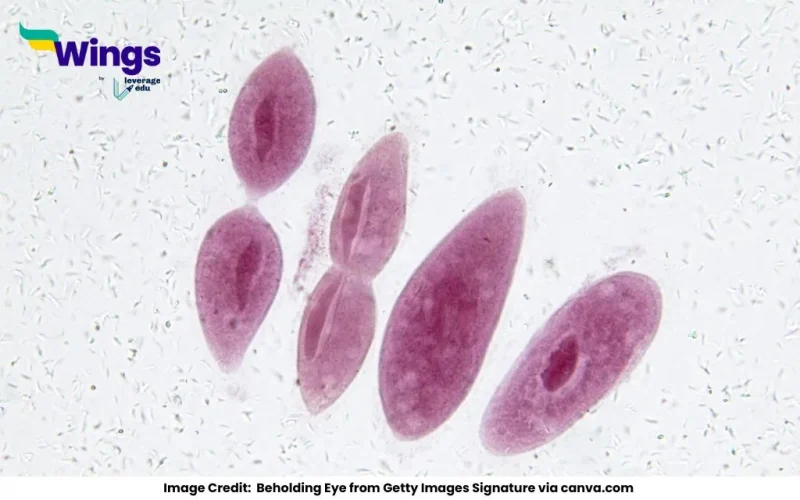Binary fission differ from multiple fission in the number of daughter cells produced and the conditions required. Binary fission produces two daughter cells in favourable conditions, while multiple fission generates many daughter cells simultaneously, often under unfavourable conditions, as seen in organisms like Plasmodium.
Complete Answer:
Fission is a process where a nucleus splits into two or more smaller nuclei. This process is usually accompanied by the release of energy in the form of heat and radiation. Fission can occur spontaneously or can be induced by the bombardment of a nucleus with a neutron.
Here is how binary fission differ from multiple fission:
| Binary Fission | Multiple Fission |
| Binary fission begins with the replication of the parent cell’s DNA. The two copies of the DNA then move to opposite poles of the cell. The cell membrane then pinches inward at the middle, eventually dividing the cytoplasm (cytokinesis) and creating two distinct daughter cells. These daughter cells are genetically identical to the parent cell (barring rare mutations). | Multiple fission is a more complex process. In this fission, the parent cell’s nucleus divides repeatedly, creating multiple nuclei without immediate cytoplasmic division. This results in a multinucleated cell. Subsequently, the cytoplasm divides, partitioning each nucleus into a separate daughter cell. |
| The defining characteristic is that binary fission always results in two daughter cells. | Multiple fission produces many daughter cells, not just two. The number can vary significantly depending on the organism and conditions. |
| In this fission, cytokinesis (the division of the cytoplasm) occurs simultaneously with nuclear division. The cell splits neatly in two. | In this process, cytokinesis is delayed. It occurs after multiple nuclear divisions have taken place. The cytoplasm then divides to surround each nucleus, forming the individual daughter cells. |
| This is the primary mode of reproduction in prokaryotes like bacteria and archaea. It has also been seen in some single-celled eukaryotes like amoeba and certain protozoa. | This type of reproduction is observed in some protozoa like Plasmodium (the malarial parasite), certain algae, and even some fungi. |
| Binary fission is generally a rapid process, allowing for quick population growth under favourable conditions. | Multiple fission is generally a slower process than binary fission, although it can still lead to a large number of offspring. |
| It is a relatively straightforward process, requiring less cellular machinery compared to multiple fission. | It is a more intricate process involving multiple rounds of nuclear division and a more coordinated cytoplasmic division. This often involves specialised cellular structures and signalling pathways. |
Common Biology Questions:
 60,000+ students trusted us with their dreams. Take the first step today!
60,000+ students trusted us with their dreams. Take the first step today!


 One app for all your study abroad needs
One app for all your study abroad needs










